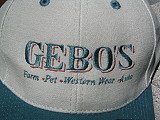Today, they printed an article titled "Plane, train, car or bus: What's the best way to go on your summer trip?". The premise sounded like an interesting experiment: send four people from Dallas to Austin (about 200 miles) in time to attend an 11am meeting, then return. Had they not proceeded to compare apples-to-kumquats, they might have succeeded. Once done with their inadequate comparison, they proclaimed that even though gasoline is ~$4/gallon, it's cheaper to drive than to plane, train or bus your way to Austin. I'm half-betting this article was funded by the Texas Oil Producers Federation (or whatever name they're hiding behind), because their conclusion was dead wrong - by a factor of two.
Honestly, where do these people get their education - a Texas Home School? Anyone who has ever taken a class in costing (I did that in 1982 or so) would understand this easily. Rather than make a fair comparison, The Managed News went out of their way to avoid defining their methodology, and the hurdles they faced (example: trains run only once every 3 days; buses run twice/day; airlines have 8 flights/day). Had they done their job, they would have easily reached the correct (and obvious) conclusion: the bus is the cheapest way to get around.
| car | bus | train | air | conclusion | |
| paper's total | $60 | $96 | $432 | $223 | train is most expensive |
| round trip time | 7:39 | 7:00 | 17:00 | 6:55 | |
| transportation only | $60 | $64 | $62 | $160 | reality: air is most expensive, all others about the same |
| assumptions | you own a car | free transportation to the bus station | free transportation to the train station; you must spend two nights at a downtown hotel | free transportation to the airport (although they did stipulate $10 to park) | they assume everyone owns a car, or has free transportation to the choice of conveyance |
| what they should have done | factor the IRS' 2008 Standard Mileage Rates - 50.5¢/mile for business | ||||
| changed outcome | $202 | $111 | $97 (due to infrequent train schedule, hotel is needed) | $238 | bus is cheapest |
| I assumed an equidistant 30 mile commute to the alternate transportation, which added about $15 to each mode. | |||||
Bottom line: the article left me with more questions than answers:
- Did they get the best deals on public transportation by buying 21 days in advance?
- Why did they choose a "downtown hotel" for the train - was that cheaper than alternatives?
- Was there a way to optimize the meeting time so that only one hotel night was needed for the train option?
- What about mixing modes? (e.g. taking the train but returning on the bus. Since the three alternates already included taxi fares, this shouldn't have been a stretch).
- What was the Carbon Footprint for the various modes? (to their credit, they touched on this by showing that the train was least efficient with fuel and the bus was most efficient)
- Why did four people travel in the car, and only one in the other modes?
- Why the variation in lobby wait times for air travel; train; bus?
- What was the price of the "free car" they used for the automobile mode?
- Did they consider renting a car?
- Was there free parking at the meeting site?
And yes, let's talk about issues such as personal safety at the bus station; the risk of terrorism at the airport; the impact on societal isolation when travelling by car .. there are a host of things left unconsidered. Maybe they were just trying to save on newspaper ink - that's the only success I spotted.

No comments:
Post a Comment